DURBAN/CAPE TOWN, South Africa -- South Africa is a faraway land, especially for those on the other side of the world in East Asia. Once there, however, the breathtaking scenery of South Africa instills a newfound appreciation for Mother Nature.
Located at the tip of the African continent, South Africa often sits low down the list for Korean travelers -- a place to explore after having conquered other popular destinations around the world.
However, the country boasts a vast array of stunning natural wonders and a unique blend of cultures that make it deserving of a bump up in the list of must-visit places in the world.
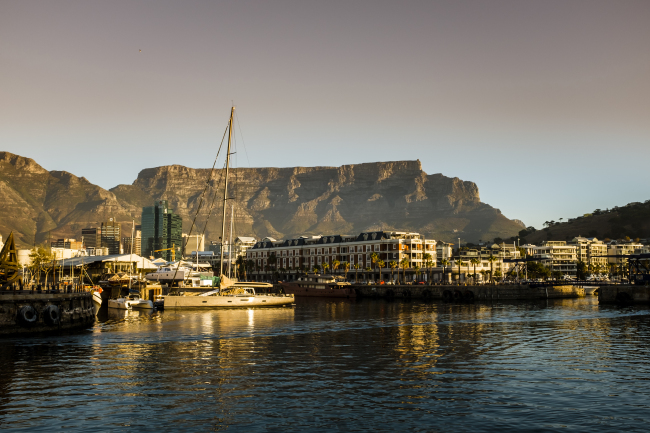
A view of Cape Town`s Table Mountain from the V&A Waterfront (Sohn Ji-young/The Korea Herald)
Getting there is perhaps the hardest part of the journey. Travelers from Seoul typically transfer in Hong Kong, before reaching Johannesburg via a 13-hour flight and then transferring to other cities as needed.
Though the long travel can be exhausting, Durban, a 1-hour flight southeast of the capital, is rewarding enough with glittering beaches and a unique sense of warmth and leisure that wipes away all the initial travel woes.
Surfer’s paradise
Located on the eastern coast of South Africa in the province of KwaZulu-Natal, Durban is South Africa’s third-largest city and a popular holiday destination among the locals.
The coastal city best known for its year-round warm weather and its long stretch of beaches collectively called the “Golden Mile,” named after the way the golden sand sparkles in the sunlight.
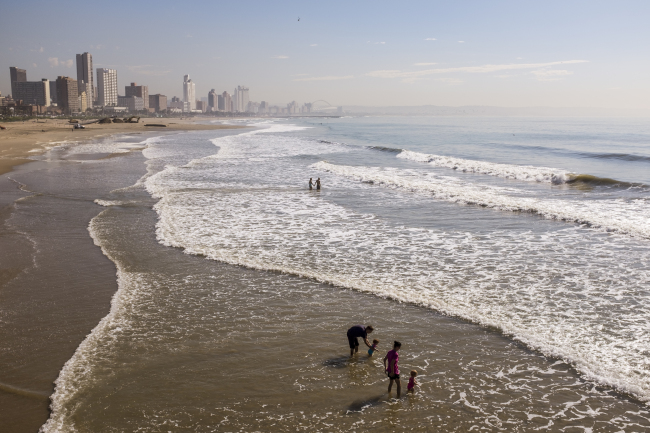
A view of Durban’s Golden Mile coastline (Sohn Ji-young/The Korea Herald)
Overlooking the ocean, one will always find groups of surfers riding the waves from the crack of dawn until nightfall. Offering stable waves and the warm waters of the Indian Ocean, Durban is a surfing hotspot that attracts surfers from around the world all throughout the year.
Even for non-surfers, the Durban beachside offers plenty of activities. The beach promenade is dotted with restaurants and bars and stations across the beach rent out bicycles for those who looking for a panoramic ride along the shore.
Situated at the end of the Golden Mile is the uShaka Marine World, an aquarium and water park where families can encounter various ocean creatures and water rides. At the Cargo Hold Restaurant on the park facilities, one can even enjoy fine dining next to a shark-filled tank.
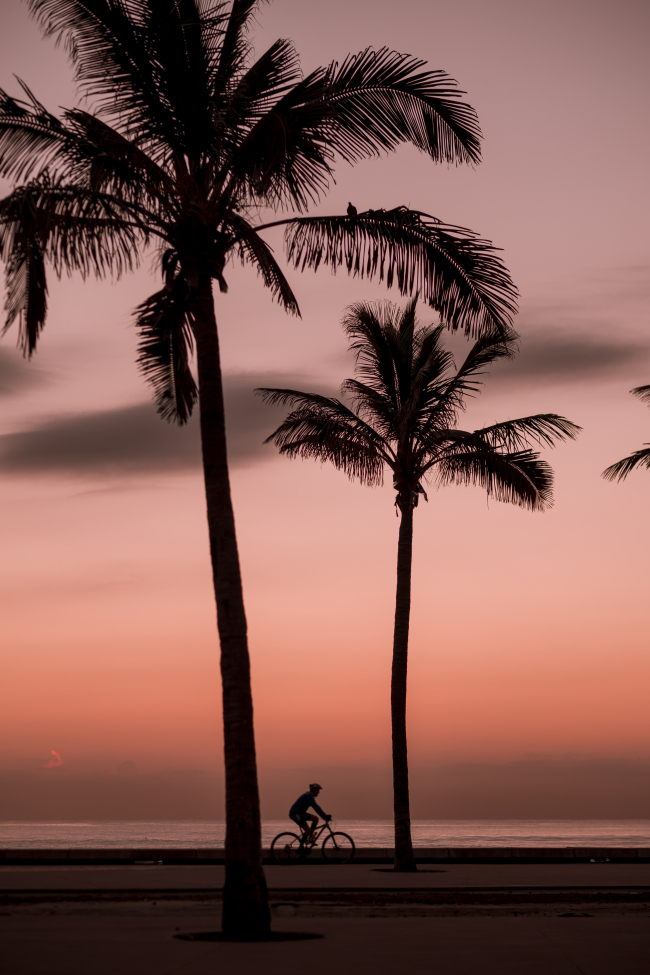
Durban’s beachfront at sunset (Sohn Ji-young/The Korea Herald)
In addition to the quality meat, seafood and wine available at affordable prices, Durban is best known for its authentic Indian cuisines as the city is home to the country’s biggest Indian population.
Dubbed the Rainbow Nation, South Africa comprises diverse ethnicities given its complex history of colonization and mixed settlements. In the case of Durban, it was where many Indians arrived as laborers in the 1860s and eventually settled.
With its heavy Indian influences, Durban is where the “bunny chow” -- a hallowed out loaf of bread filled with curry -- was born. It’s a cheap and easy-to-eat choice among the locals.
Though most famous for its beaches, Durban is also surrounded by mountains that are accessible via a short drive. Just 35 kilometers inland from the city is the PheZulu Village that provides visitors a glimpse of the traditional culture and lifestyle of the Zulus, the largest ethnic group of South Africa.
The village is nestled inside the Valley of a Thousand Hills, named after the many rolling hills, cliffs and valleys in the area. Having a long, relaxing lunch at one of the restaurants atop the hills is highly recommended.
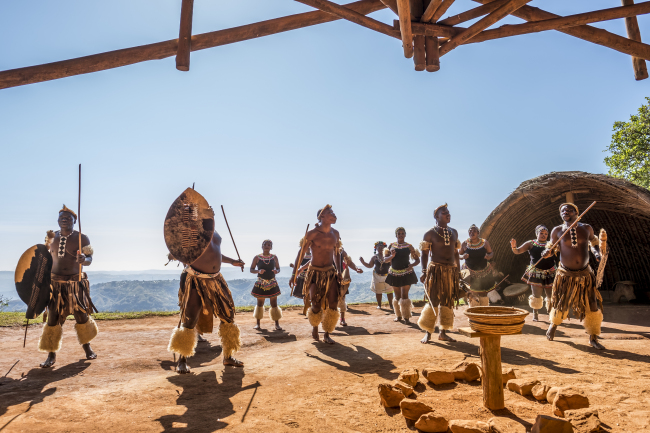
Dancers perform at the PheZulu Village nestled in the Valley of a Thousand Hills located 35km inland from Durban (Sohn Ji-young/The Korea Herald)
Other key places to visit around Durban include the “Mandela Capture Site” that commemorates the country’s first black president and the start of his long resistance against apartheid in the mid-1950s. Erected on the site is the famed optical illusion steel structure depicting Mandela’s face.
In fact, travelers to South Africa will encounter many other memorials and sites dedicated to Nelson Mandela, an iconic figure who helped overturn the country’s dark history of apartheid.
During the apartheid rule that lasted from 1948 to 1991, South Africa’s white minority systematically enforced political and economic discrimination against the non-white majority. Mandela was imprisoned for 27 years for his resistance against this system.
He was freed in 1990, after which he was awarded the Nobel Peace Prize in 1993 for his role in the peaceful termination of apartheid and elected as president in 1995. Post-apartheid, dozens of ethnicities and cultures now freely co-exist in South Africa.
Tip of Africa
It’s impossible to talk about South Africa without mentioning Cape Town, the country’s crown jewel. The port city is basked in cultural heritage, breathtaking natural wonders and a unique mixture of European and African influences that date back to the arrival of the European explorers in the late 1400s.
Cape Town’s most prized natural landmark is Table Mountain, listed as one of the world’s Seven Wonders of Nature. As its name suggests, it’s a flat-topped mountain overlooking the city of Cape Town that sits 1,086 meters above sea level.

A view of Cape Town from atop Table Mountain (Sohn Ji-young/The Korea Herald)
The main feature of Table Mountain is a level plateau that extends around 3 kilometers across each side, edged out by steep, rocky cliffs. Visitors can reach the top via a five-minute cable car ride.
The flat top of the mountain is often covered by clouds and frequently subjected to strong winds, rendering the site closed on bad weather days. If you are lucky, however, you will be able to savor spectacular views.
At the top of the mountain are easy walking trails with few inclines. Looking down, one can view in one glance Cape Town’s landscape and the broad, icy blue waters of the Atlantic Ocean. Completing the dazzling view of the mountain range are Devil’s Peak to the east and Lion’s Head to the west, together with Signal Hill.
Situated nearby is the Victoria & Alfred Waterfront, another bustling tourist area. The picturesque harbor is filled with shops, museums and restaurants and offers a postcard-like view of Table Mountain from the ground.
Those seeking even more exquisite views can embark on a sunset cruise that departs at around 6 p.m. While sipping on a glass of sparkling wine, cruisers can enjoy a marvelous view of Table Mountain and the city as the sun dips into the sea. The cruise costs only around 325 rand ($27).
Heading further south from the city center, Cape Town presents an entirely new set of natural attractions, including the famed Cape of Good Hope.
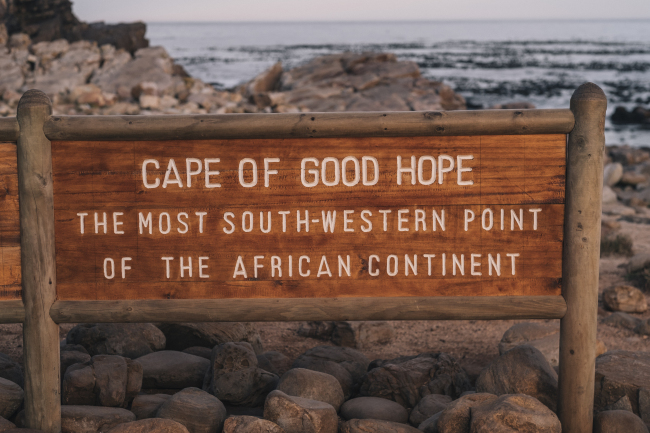
The Cape of Good Hope, which can be reached by car or by hiking from Cape Point (Sohn Ji-young/The Korea Herald)
It’s a landmark discovered in 1488 by Portuguese sailor Bartolomeu Dias, the first European mariner to round the southern tip of Africa and credited with opening a sea route from Europe to India and the Far East.
A common misconception is that the Cape of Good Hope is the southernmost tip of Africa where the Atlantic and Indian Oceans meet. However, the southernmost point of Africa is actually Cape Agulhas, located about 150 kilometers to the east. The Cape of Good Hope marks the most southwestern tip of Africa, as written on the sign marking the historic location.
Though the Cape of Good Hope can be directly reached by car, the better and highly recommended route is to first head up to Cape Point and then hike down to the tip of the cape on foot.
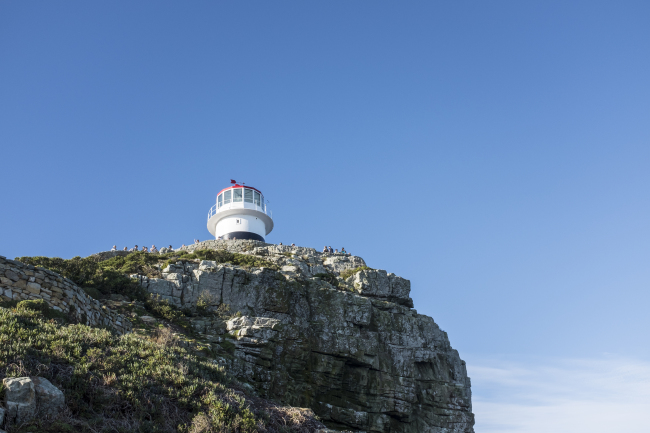
The lighthouse at the top of Cape Point (Sohn Ji-young/The Korea Herald)
Standing 238 meters above sea level, Cape Point projects into the sea with a lighthouse on top. A funicular takes visitors up to the lighthouse, which presents spectacular views of towering stone cliffs, gorgeous bays and an array of valleys and hills.
From Cape Point, one can hike down a trekking trail that extends down to the Cape of Good Hope, touching down on the beautiful landscapes seen from the Cape Point observatory. At sunset, the cape’s surrounding skies turn into a beautiful mesh of sky blue, the yellow-reddish sun and white clouds reminiscent of a scene from a National Geographic documentary.
Though the Cape area is an hour drive from the city center, there are plenty of other places to stop by on the way as well. Animal lovers can visit the seal island by taking a boat at Hout Bay, or go see hundreds of African penguins perched out on the sand at Boulders Beach.
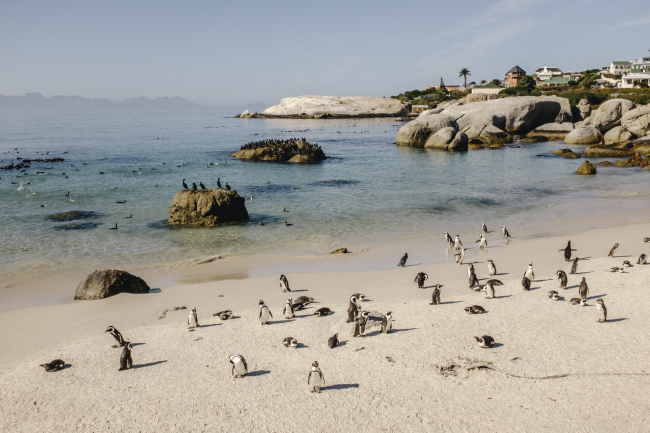
Hundreds of African penguins inhabit Cape Town’s Boulders Beach. (Sohn Ji-young/ The Korea Herald)
There are also plenty of observatory points with views of the ocean along Chapman’s Peak Drive, the scenic coastal driving route looping the Atlantic Coast that connects the suburban town of Noordhoek to Hout Bay.
For those who love to drink, Cape Town is also famous for its high-quality wines sold at affordable prices. The town of Stellenbosch located east of Cape Town has hundreds of picturesque wineries open for wine tasting, purchases and fine dining while overlooking the colorful vineyards.
By Sohn Ji-young, Korea Herald correspondent (
jys@heraldcorp.com)








![[Exclusive] Korean military set to ban iPhones over 'security' concerns](http://res.heraldm.com/phpwas/restmb_idxmake.php?idx=645&simg=/content/image/2024/04/23/20240423050599_0.jpg&u=20240423183955)




![[Herald Interview] 'Amid aging population, Korea to invite more young professionals from overseas'](http://res.heraldm.com/phpwas/restmb_idxmake.php?idx=645&simg=/content/image/2024/04/24/20240424050844_0.jpg&u=20240424200058)